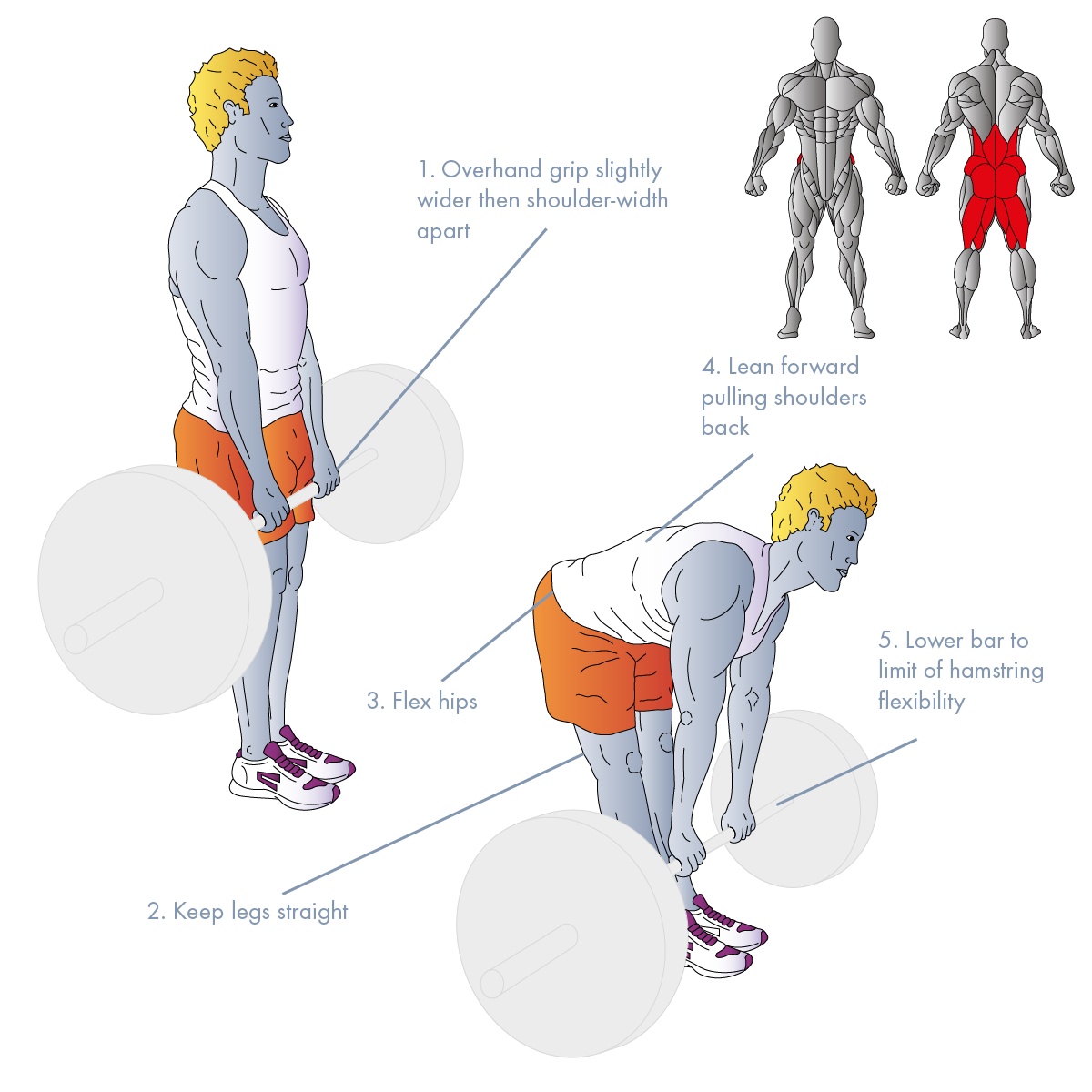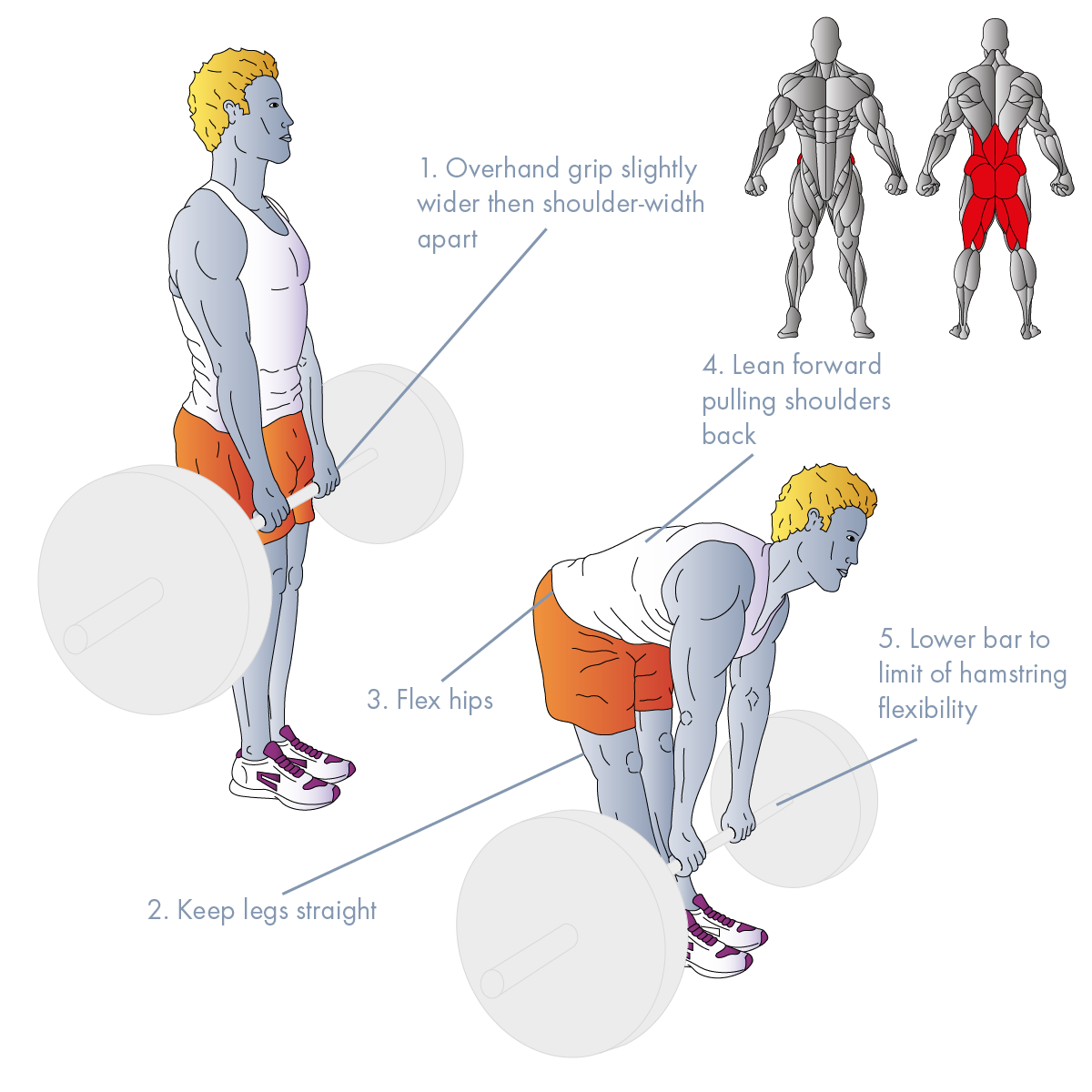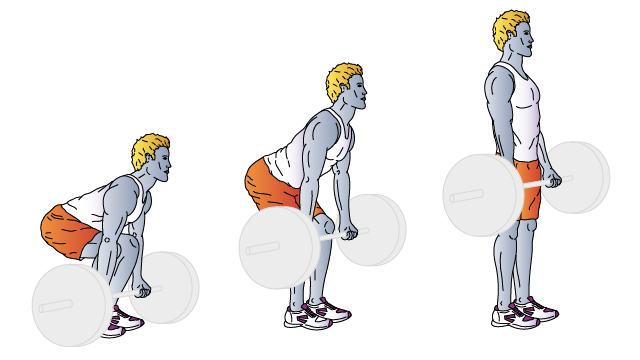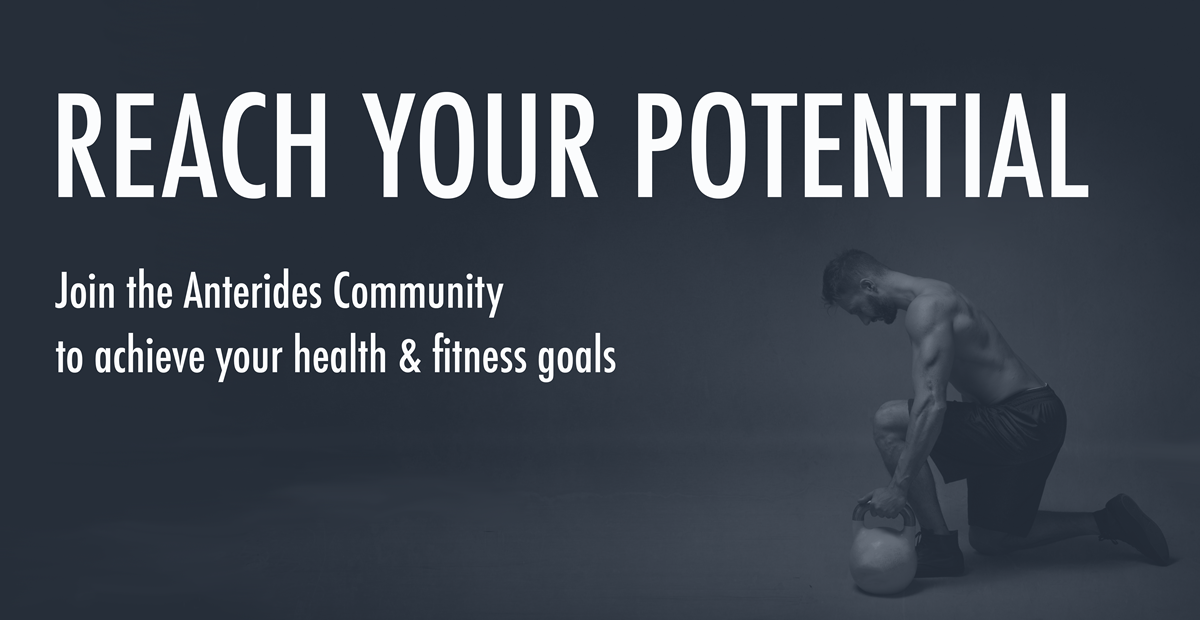STRAIGHT-BACK STIFF-LEG DEADLIFT

If you suffer from lower back problems this lift should be avoided. Lifters attempting this exercise should already be familiar with the movement pattern for the Standard Barbell Deadlift.
Deadlift variations such as the Straight-Back Stiff-Leg Deadlift help to develop a crucial movement pattern for anyone who is serious about their training – the Loaded Hip Hinge Pattern. The ability to stabilize the spine and pelvis under tension whilst bending over is a basic requirement for many popular lifts such as Bent Over Rows, Squats, and the standard Deadlift. Furthermore, this movement pattern is a basic functional movement that is used as we undertake activities of daily living to pick things up off the floor. Nevertheless, mastering the loaded hinge hip movement pattern can be challenging, especially for the novice lifter since it requires the gluteal muscles, erector spinae, and hamstrings to work in unison to allow the torso to drop forward in a strong and controlled fashion.
The Straight-Back Stiff-Leg Deadlift is performed in a very similar fashion to the Stiff-Leg Deadlift with one very notable difference – it does not involve flexion and extension (rounding and un-rounding) of the spine. Whilst such movement does have the benefit of dynamically training the erector spinae muscles, this is far outweighed by the potential negative consequence of placing such excessive stress on the spine – in particular the lumbar vertebrae. As such, this lift is considered a safer lift than the Stiff-Leg Deadlift.
This lift (and also the Stiff-Leg Deadlift) is often mistaken for the Romanian Deadlift, and whilst there are similarities between these lifts - particularly in their set up - there are notable differences in execution and the muscles targeted which distinguish each as a lift in their own right. The most notable differences are 1) The Straight-Back Stiff-Leg Deadlift does not require you to push your hips back, but the Romanian Deadlift does, as such the gluteal muscles are worked to a lesser degree in the former. 2) The Straight-Back Stiff-Leg Deadlift, as the name suggests, requires the legs to remain fixed throughout the lift, whilst the Romanian Deadlift requires the knees to bend as the bar is lowered towards the floor. 3) The bar is allowed to slightly drift away from the body in the Straight-Back Stiff-Leg Deadlift, but in the Romanian Deadlift, it remains close to the body for the entire lift.
The Straight-Back Stiff-Leg Deadlift can also be used as an effective accessory lift to help improve your Squat and Deadlift lockout if performed after either one of these main lifts. However, since a comparatively heavy weight can be used, it can also be considered an effective lift in its own right to develop both your hamstrings and gluteal muscles. This lift can, however, result in significant hamstring soreness, which emphasizes its effectiveness at targeting these muscles.
Skill Level: Intermediate
Training: Strength
Type: Compound
Force: Pull
Equipment: Barbell
1° Muscles: Hamstrings, Gluteal Muscles, Lower Back (Erector Spinae)
SET-UP
- Load a bar with an appropriate weight.
- Stand tall (neutral spine, chest up, chin up) with soft knees (slightly bent) and feet hip-width apart with toes pointing forward.
- With your hands slightly wider than shoulder-width apart, use an overhand grip (palms facing down) to deadlift the bar from the floor.
- Fully extend your arms allowing the bar to rest against the front of your thighs.
EXECUTION
- Keeping both your head and chest up to maintain a neutral spine, as well as your knees fixed (do not bend any further than ‘soft knees’), inhale as you flex your hips - without pushing them back - to lean forward and lower your torso.
- As you descend pull your shoulders back and allow the bar to slightly drift away from your body so that your outstretched arms remain roughly perpendicular to the floor as the angle of your torso changes.
- Maintaining a neutral spine, continue to lower the bar to the limit of your hamstring flexibility (just before a mild stretch becomes strong) and/or just before your back starts to flex (round).
- Exhale as you return back to the start position by extending your hips to stand upright.
- Repeat for the prescribed number of reps and sets.
- If you have a squat rack with safety pins, set them to just below hip height and load the bar on them. This way, you can take the bar off the rack instead of deadlifting it from the floor.
- Some lifters find it more comfortable to point their toes outward; however, this should be minimal and no more than 15 degrees.
- The depth to which you descend in this deadlift variant will probably be shallower than other deadlift variants; the actual depth reached will be based on what you feel in your hamstrings and whether your back flexes as you descend.
- Using a wider grip allows for a greater descent, and hence a fuller range of motion.
- Depending on the weight used, wrist wraps may help you to hold the bar for the entire duration of the set.
- The exercise can also be performed with dumbbells.
- Stiff-Leg Deadlift
- Romanian Deadlift







